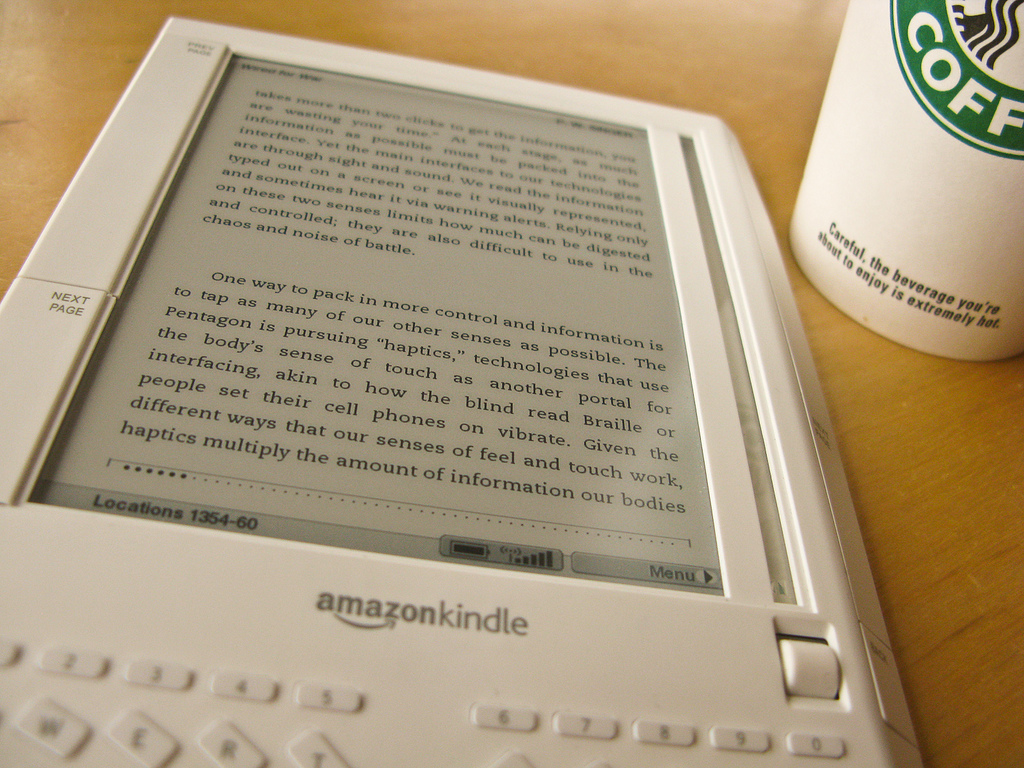The news that Google will be launching their own Google Editions cloud bookstore this summer promises a welcome shake-up for the world of ebooks.
Because, while it’s true the nascent technology has gotten a lot of attention recently, especially with the launch of the iPad, it’s not exactly setting the world on fire either. In fact, even diehard readers are yawning at it a bit. Sure, Google’s new service that will allow you to read a book from anywhere you can log into your account sounds promising – but more needs to be done.
Here are 5 things that the ebook world needs if it wants to really excite people who love to read.
1. Make Reading More Social
A few months ago, I was sitting in a coffee shop reading a good ole’ paper book and I stumbled across a really great line. I immediately wanted to share it on Twitter. It suddenly felt so archaic and old-fashioned that I couldn’t just press a button and do this.
But as it turns out, because of an inability to copy and paste and because the functionality just isn’t there, you can’t do that with an eBook either. Crazy, right? In 2010, this is a fundamental flaw.
But how cool would it be if you could read and share the notes we make in the margins with your friends? Or read theirs when you read the same book? Similarly, while we have things like Goodreads and Shelfari on the one hand, and Amazon or iTunes’ reviews on the other, why has there been no attempt to allow shared recommendations, reviews and conversations on the devices themselves?
Yes, the solitude and focus of reading is half the appeal. But sharing ideas with others and connecting over books is just as important. It seems with so much tech dedicated to social media, it seems a wasted opportunity that this hasn’t happened yet, and is perhaps the biggest knock against ebooks for now.
2. Integrate Seamless Copy and Paste
The Nook doesn’t have a copy and paste feature. The Kindle’s notetaking feature is okay for this, but still not seamless. And the DRM on the iPad’s iBooks prevents you from copying and pasting at all (unless you used a clunky workaround).
But copying and pasting bits of books is how we share things with each other and it makes working with them so much easier. Sure, publishers have concerns. But photocopying didn’t kill the book industry – and copy-and-paste won’t kill the ebook biz. For reading fans, this would be a welcome addition.
3. Introduce Color eInk (or something like it)
This may seem a little silly in light of the arrival of the iPad. But eInk – or screens like the Pixel Qi – offer better reading in sunlight than LCDs and, of course, allow for much better battery life. Bringing color to the ebook – even if it’s mainly used for covers – will be a way to draw in those readers who aren’t content to simply stare at a grey and black screen but who appreciate the paper-like benefits of eInk.
It’d be a small and subtle change, but an important one. Magazines and newspapers would be a much more compelling option, and if one could have the benefits of color without the drawbacks of an LCD screen – or a heavy iPad – then the ebook would seem a lot more appealing.
4. Allow For A Used Market and Book Lending
Buying, selling and lending one’s used books is a time-honored tradition – and is just part of reading today. Sure, some books you want to keep forever – but some you’d rather not. And which avid reader hasn’t excitedly pressed a book upon a friend?
But while publishers and ebook makers have been hard at work on creating DRM to stop people copying books, they seem to have ignored the other half that allows people to sell and lend them to others. Given that DRM often requires centralized servers anyway, this can’t be that hard to pull off, and would remove a major drawback of digital ownership.
In fact, the inability to get rid of or lend books is something preventing many people from hopping on the ebook bandwagon. To ignore this is to ignore what your customers want – which, last time I checked, is never a great idea.
5. Think Big! A New Definition of Books
I still distinctly remember when the iPad was announced, writer and Twitter media-guru Robin Sloan had the following to say: “Apple: you did not invent a magical and revolutionary device so we could read books in ePub format.” And it still stands. Even when it comes to eInk books, publishers are still largely thinking in terms of taking the paper book and making a digital replica of it.
That’s a fine start. But technology has always changed how and what people read. There is a reason that novels weren’t written on manuscript scrolls in the 13th century. So how about we start to think outside of simply recreating paper books and making things more native to their digital forms? (Hint: the Alice in Wonderland book above is a good start)
What about you? If you’re hesitant to jump into the eBook world, what’s preventing you from joining what some are hoping is the new reading revolution?



GIPHY App Key not set. Please check settings